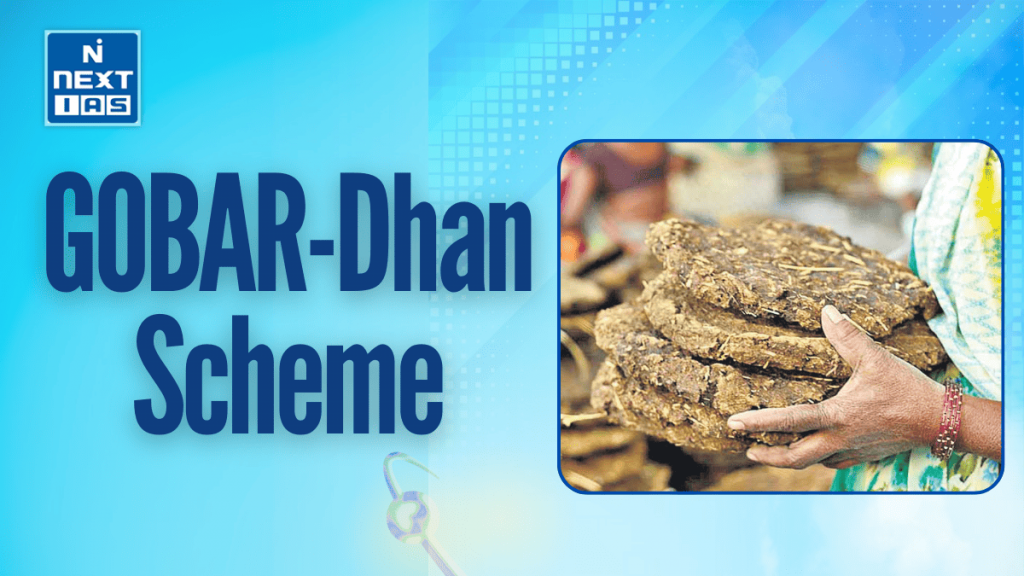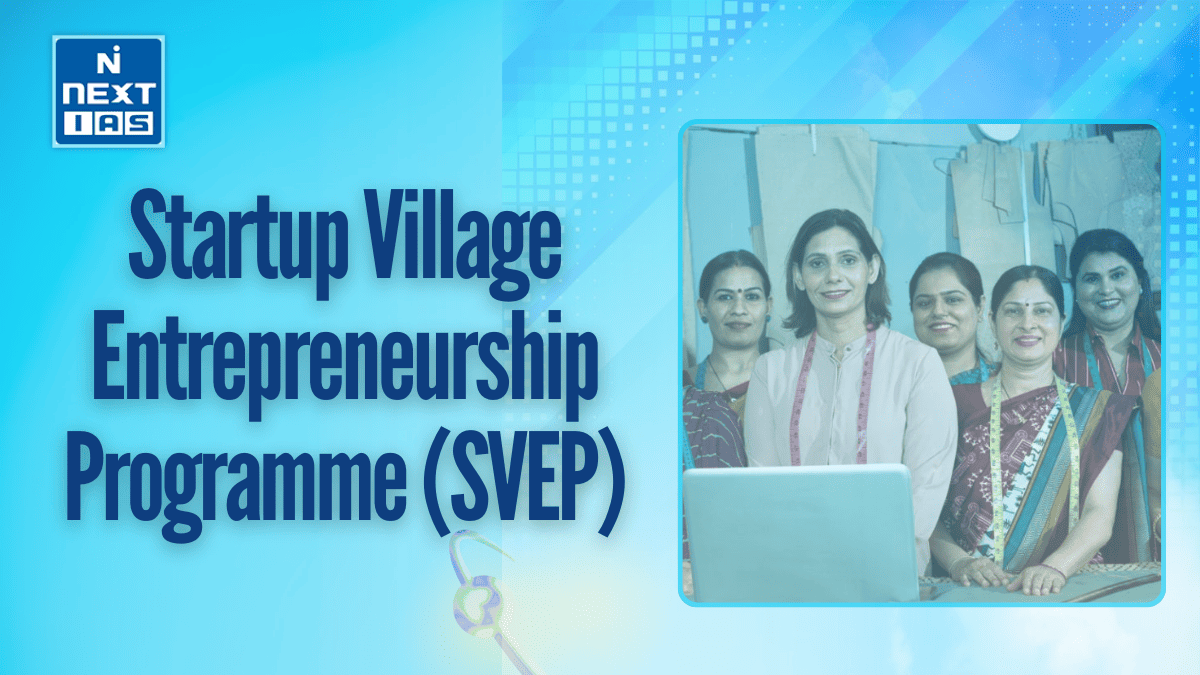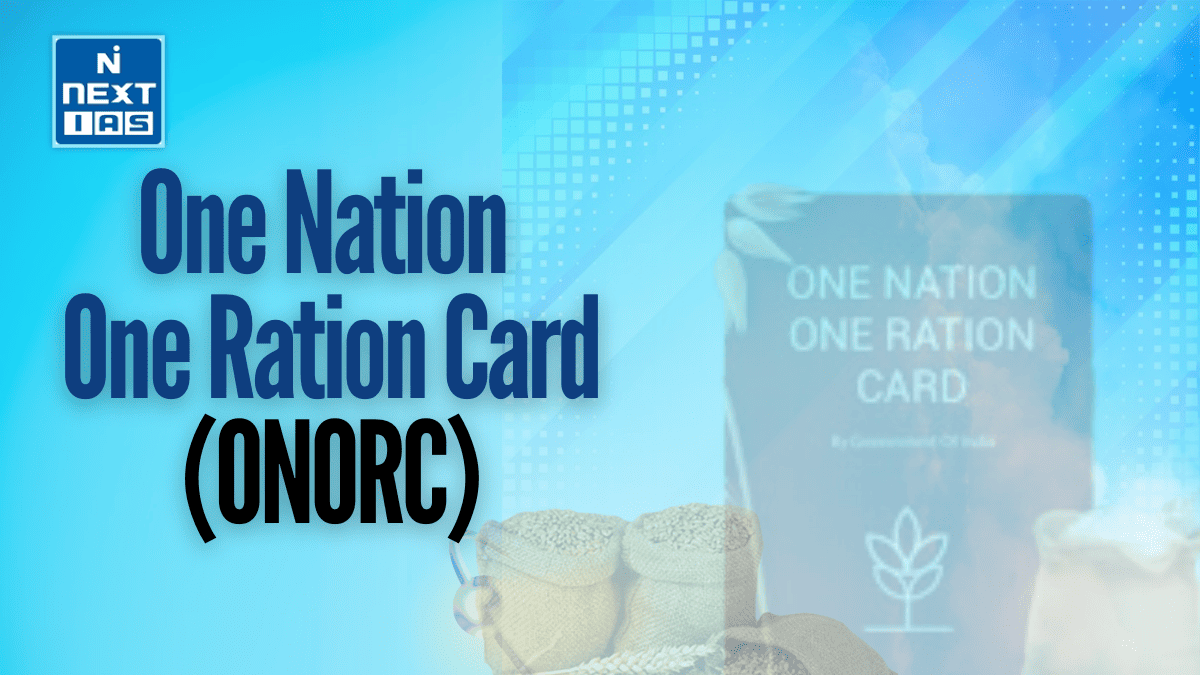
Galvanizing Organic Bio-Agro Resources Dhan (GOBARdhan) is an umbrella scheme of utmost importance provided by the Government of India in the spirit of the whole-of-Government approach to the conversion of waste into wealth by supporting a circular economy. The Government of India wants to set up a robust ecosystem for setting Biogas/CBG/Bio-CNG plants so as to spur sustainable economic growth and stimulate the circular economy. The nodal department of GOBARdhan, namely the Department of Drinking Water and Sanitation, Ministry of Jal Shakti, has developed a portal.
About the GOBAR-Dhan Scheme
- Thus, it is a huge umbrella for all such schemes and policies facilitating organic waste management into biogas, CBG, or Bio-CNG, e.g., cow dung and agri-residues.
- The initiative includesthe Waste to Energy Scheme by the Ministry of New and Renewable Energy, SATAT (Sustainable Alternative Towards Affordable Transportation) Scheme by the Ministry of Petroleum and Natural Gas, SBM(G) Phase II program by the DDWS, Agri Infrastructure Fund (AIF) by the Department of Agriculture Cooperation & Farmers Welfare; and Animal Husbandry Infrastructure Development Fund (AHIDF) by the Department of Animal Husbandry & Dairy.
- Under GOBARdhan, state governments and private sector partners, including entrepreneurs and societies, execute the programs. Any CBG/biogas plant/project (with a production capacity of more than 10 cubic meters per day) can be registered as part of GOBARdhan for the primary output of bio slurry.
- GOBARdhan has thus been conceptualized keeping in view a design orientation to support India’s climate action agenda, particularly the net-zero goal 2070.
- India has the largest livestock population globally, and therefore, it also generates a vast amount of animal waste.
- The CBG/biogas sector can serve as a linchpin in India’s clean energy transition, energy security, and affordability, encouraging entrepreneurship, creating rural job opportunities, and aiding the growth of local economies.
- The transition to CBG/biogas may provide employment for semi-skilled and skilled human resources in several areas, such as waste collection, operations, and construction.
- It shall help rural communities and will especially benefit women who, in turn, will have access to cleaner fuel and thus better hygiene in villages, followed by better health through less vector-borne and respiratory diseases.
- Moreover, this initiative aligns with the nation’s pursuit of the Sustainable Development Goals, including SDG 3-Good Health and Wellbeing, SDG 6-Clean Water & Sanitation, SDG 7-Affordable & Clean Energy, SDG 13-Climate Action, etc. It also strongly supports the circular economy and the Government of India’s Mission LiFE.
Objectives of the GOBAR-Dhan Scheme
- To support villages, safely manage their cattle and agricultural waste,and make the villages clean.
- To support communities in converting cattle and organic waste into wealth using treatment systems.
- To convert organic waste, especially cattle waste, to biogas and organic manure for use in rural areas.
- To promote environmental sanitation and curb vector-borne diseases through effective disposal of waste in rural areas.
- To promote rural employment and income generation opportunities by involving entrepreneurs, SHGs and youth groups insetting up, operation and managing GOBARdhan units.
Guiding Principles of GOBARdhan Implementation
- Implement GOBARdhan
- Popularize the compelling business case for safe management of cattle dung and other organic waste among rural population by state, district and block adminstration
- Promote the business case and community collective action on GOBARdhan through intensive IEC at the local level
- Initially prioritize villages with high cattle population
- Enable usage of the financial provision of Rs.50 lakhs by several villages in a district
- Create infrastructure that would enable it to be owned, operated and managed by the community themselves.
Eligibility
- For Individual Household Model: Individual Households identified by the Gram Panchayats.
- For Cluster Model: Cluster of Households identified by the Gram Panchayats, in association with Cooperatives, Milk Unions, Farmer Producer Organizations (FPOs), SHGs, CBOs developed under DAY-NRLM, Private entrepreneurs, etc. These households should have a minimum of 3 to 4 cattle.
- For Community Model: Households identified by the Gram Panchayats.
- For Commercial Model: Entrepreneurs/Cooperatives/Gaushalas/Dairies, etc. are eligible to setup large biogas/Compressed Bio-gas (CBG) plants
- Villages with a high population of cattle should be taken on priority.
Significance of the GOBAR-Dhan Scheme
This program emphasizes waste-to-wealth solutions under the Swachh Bharat Mission-Gramin. The scheme provides scientific management of animal and organic waste to produce biogas, compressed biogas (CBG), and organic fertilizers.
Waste Management and Clean Energy
- Discourages open dumping of animal waste, agricultural residues, etc., promoting sanitation and hygiene in rural areas.
- Provides incentives for the production of biogas and bio-CNG as an alternative source of clean and renewable energy for cooking and transportation.
Rural Livelihood and Economic Growth
- Creates income opportunities for farmers, dairy holders, and entrepreneurs in rural areas through waste conversion into useful materials.
- Promote the setting up of biogas plants and organic fertilizer plants for rural entrepreneurship and employment generation in the area.
Soil Health and Sustainable Agriculture
- Promotes the use of organic fertilizers and bio-slurry; reduction in the use of chemical fertilizers on the other hand enhances soil fertility.
- Hence increases agricultural production and sustainability while at the same time lowering input costs for farmers.
Environmental Benefits
- This helps reduce greenhouse gas emissions from the methane of organic waste.
- Aids climate action by promoting the green energy and wastes management sphere.
Contribution to Swachh Bharat and Circular Economy
- Further strengthens the circular economy through efficient utilization of wastes for beneficial purposes.
- Does its bit for the Swachh Bharat (Clean India) and Atmanirbhar Bharat (Self-Reliant India) visions by fostering energy and agricultural self-reliance.
The conversion of wastes into wealth, rural development, and environmental sustainability form three pillars under which the GOBAR-Dhan Scheme rises to be a game-changer for the rural economy of India.
Lacunae of GOBAR-Dhan Scheme
Lack of awareness and adoption
- Some farmers and rural communities are unaware of the benefits, and the operation of, biogas plants.
- Lack of training and technical above-average knowledge on the subject matter preclude widespread adoption.
Financial and operational constraints
- Investment costs actually put off small farmers in setting up biogas plants.
- Access to credit and incentives tend to define delays for implementation.
- Another constraint is that the incurring costs for maintenance and operation of biogas plants turn up really high, which are not good for the long-term viability.
Infrastructure and Supply Chain Gaps
- The scope for scaling up biogas production is restricted due to poor infrastructure for biogas generation and distribution.
- On account of no structure for its market, biogas, and organic fertilizers lose a lot as financial incentives.
Limited Private investment
- The scheme failed in attracting private capital and private public partnerships, mainly due to policy and financial issues.
Regulatory and Policy Gaps
- Lack of a clear-cut policy and incentives with regard to large-scale biogas production impugns investor confidence.
- This inconsistency in the implementation across all states leaves a divide in terms of progress.
GOBAR-Dhan Scheme for UPSC CSE Prelims
Introduction
- Full Form: Galvanizing Organic Bio-Agro Resources Dhan
- Inaugurated in the year 2018
- Ministry: Ministry of Jal Shakti (Department of Drinking Water & Sanitation)
- Objective: It works toward waste-to-wealth initiatives to produce biogas, CBG, and organic manure from cattle dung and organic waste.
Key Features
- Promotes biogas and compressed biogas (CBG) production from organic wastes.
- Supports the entrepreneurship activities in rural areas pertaining to waste management.
- Sanitation and improvement of the environment are the prime objectives.
- Gives additional thrust to sustainable agriculture through organic fertilizers.
- Provides opportunities for rural employment through the establishment of biogas plants and bio-CNG units.
Implementation
- It comes under the broader Swachh Bharat Mission-Grameen (SBM-G).
- Supports community/cluster-based biogas plants, as well as individual biogas plants.
- Financial assistance and incentives are given to bio-energy projects.
Benefits
- Lessens dependence on chemical fertilizers.
- Provide extra income to farmers and rural communities.
- Reduces pollution of the environment due to agricultural and animal waste.
- Propagates production of renewable energy in rural areas.
Related Initiatives
- Aligns with SATAT (Sustainable Alternative Towards Affordable Transportation) initiative for bio-CNG production.
- Supports India’s commitment to clean energy and waste management goals.
Way Forward
The GOBAR-Dhan Scheme must focus on scaling up biogas and bio-CNG production, improving rural infrastructure, and promoting public-private partnership. Enhancement of awareness levels, technology adoption, and financial incentives will ensure sustainability. Linking waste-to-energy options with a circular economy model will foster both rural livelihoods and environmental protection.
Conclusion
The GOBAR-Dhan Scheme facilitates the waste-to-wealth model in which organic waste is converted into biogas and bio-fertilizers-for-rural sanitation, energy security, and income generation-with sustainable agricultural practices and circular economy for a cleaner environment, hence towards the vision of Swachh Bharat and Atmanirbhar Bharat.





